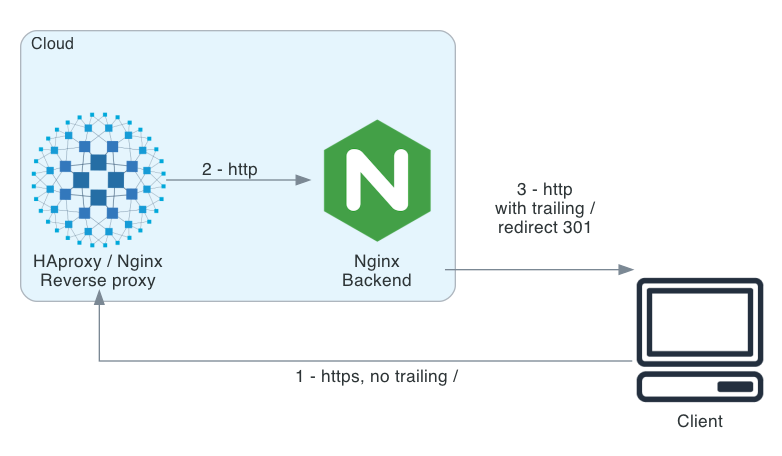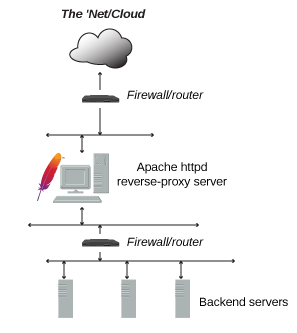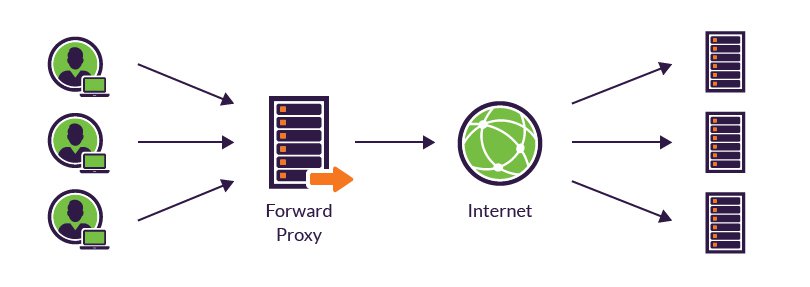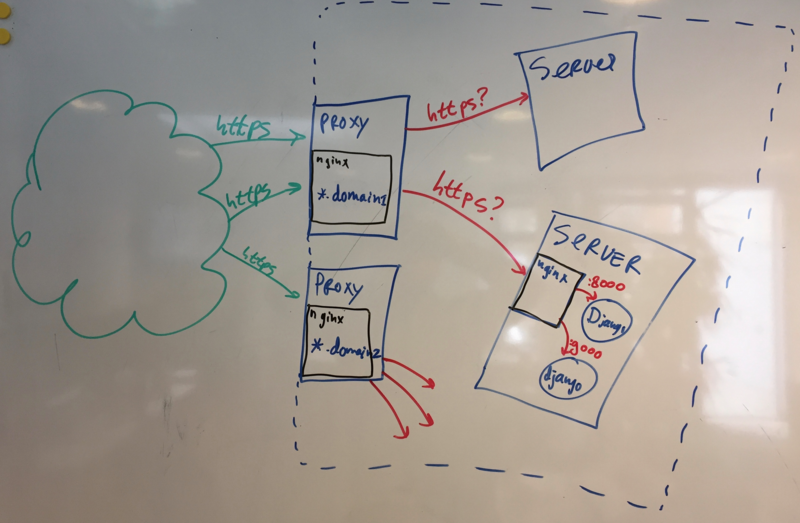

- #PROXY VS REVERSE PROXY NGINX HOW TO#
- #PROXY VS REVERSE PROXY NGINX UPDATE#
- #PROXY VS REVERSE PROXY NGINX PRO#
- #PROXY VS REVERSE PROXY NGINX PASSWORD#
From here, we can add our first proxy host! Under the Details section, fill in the info similarly to the screenshot below. Near the top right, select Add Proxy Host. Go back to your Nginx Proxy Server at Select Hosts > Proxy Hosts. This will forward all incoming Internet traffic using ports 443 (HTTPS) and 80 (HTTP) to your reverse proxy server. Save the rule, and create another rule with the same info, but replace "443" with "80." Be sure to save this rule too! You should then have two rules: NGINX_443 and NGINX_80. Check to enable the forward, check the WAN interface, and check "Anywhere." In both the Port and the Forward Port, enter "443." Add your reverse proxy host local IP in the Forward IP spot (e.g., 192.168.1.10).

Create a new rule and name it something descriptive (I named mine NGINGX_443). For Unifi users, go to Settings > Routing & Firewall > Port Forwarding.
#PROXY VS REVERSE PROXY NGINX PRO#
I use a Unifi Dream Machine Pro (UDMP) as my gateway, so the screenshots will reflect the Unifi Controller. The first step is to forward ports 80 and 443 to your reverse proxy host (e.g., 192.168.1.10). I have whitematter.tech pointing to a DuckDNS hostname.
#PROXY VS REVERSE PROXY NGINX UPDATE#
If you do not have a static public IP address, you might consider a free dynamic DNS service like DuckDNS, which will automatically update the DNS records to point to your IP address if your public IP is changed by your ISP. This particular configuration assumes that you have forwarded your domain name (e.g., whitematter.tech) to your public IP. You can fill in your own server information. For an example, I will show you how I am configuring the reverse proxy for this WordPress site.
#PROXY VS REVERSE PROXY NGINX PASSWORD#
Once your password is changed, you can begin configuration. Immediately change the login email and password for your admin user to secure your reverse proxy. Login with the default user email and password shown below. If all goes well, you should now have Nginx Proxy Manager and MariaDB (for the reverse proxy database) running successfully.Īccess your reverse proxy frontend by going to (e.g., ). Once you have either downloaded the file or created your own, build your containers by issuing the following command: If you prefer to create your docker-compose.yml file yourself, make a file named " docker-compose.yml" and add the following to the file: version: '3'

Wget -no-check-certificate -content-disposition You can easily pull this docker-compose.yml with cURL or wget by running the commands below:

To simplify your install, I have hosted the docker-compose.yml I use to deploy my Nginx Proxy Manager: GitHub. I may follow up with a post about that later, but until then, I suggest separate devices/VMs. You could run your WordPress site from the same machine/VM running your reverse proxy, but you will likely have to edit some docker-compose files. You can use a VM or an OS on bare-metal capable of running Docker (for this tutorial though, we will use commands and terminology only applicable to Ubuntu, but you can make adjustments where necessary if you are familiar with Docker and choose not to use Ubuntu).įor tips on running a self-hosted WordPress site, which will be referenced in this post, check out this tutorial. You will need docker-compose installed on your system.įor this setup, I am using a Ubuntu bare-metal machine behind a Unifi Dream Machine Pro. For this setup, I recommend a singular device or VM that can host your reverse proxy. Managing Nginx without a GUI is definitely doable, but I am not much of a fan of troubleshooting that setup.
#PROXY VS REVERSE PROXY NGINX HOW TO#
Specifically, I will show how to setup the reverse proxy for se with WordPress, though the applications of this reverse proxy are endless!įor this tutorial, we will be setting up Nginx Reverse Proxy with Nginx Proxy Manager, which acts as a GUI frontend to manage your reverse proxy. In this post, I will show you how to easily setup a reverse proxy using Docker, forward the necessary ports to the reverse proxy, and configure the reverse proxy to forward traffic to various servers on your network. In contrast to a forward proxy, a reverse proxy sits in front of web servers or other servers and forwards client traffic to the appropriate server. Reverse proxies are powerful tools used typically to forward client traffic to a server.


 0 kommentar(er)
0 kommentar(er)
